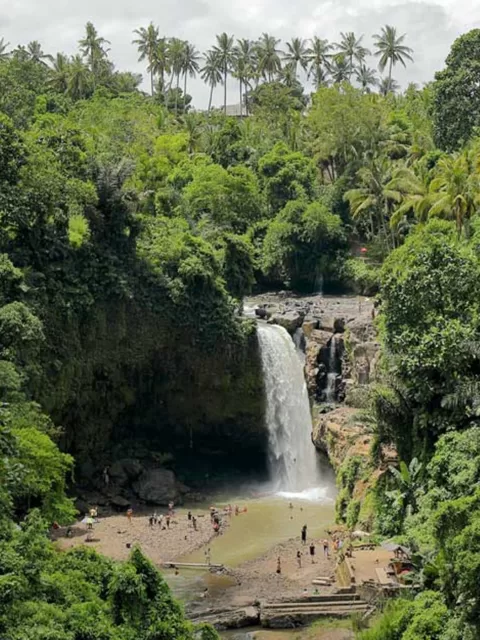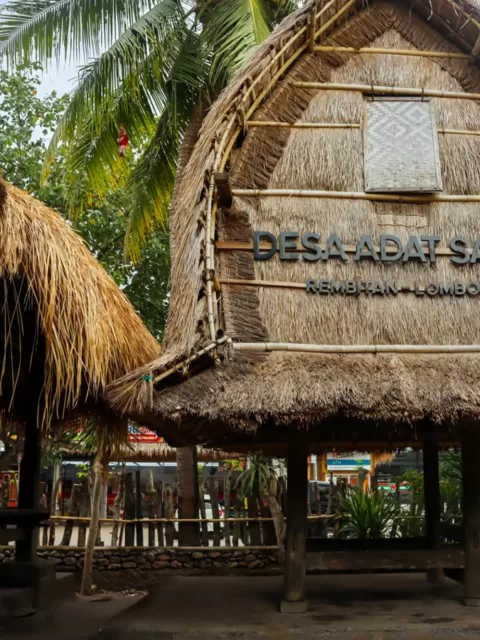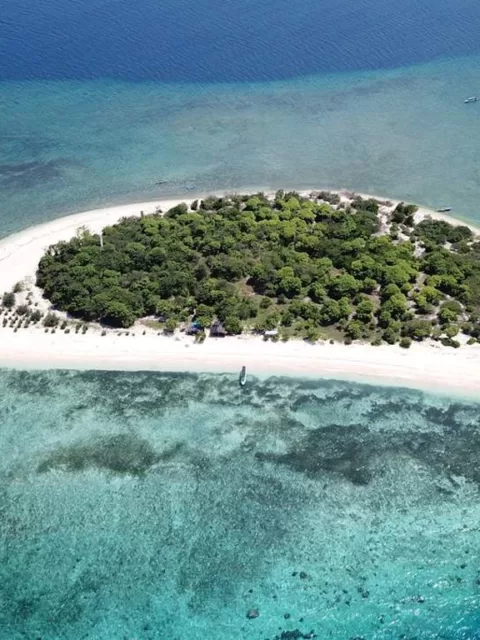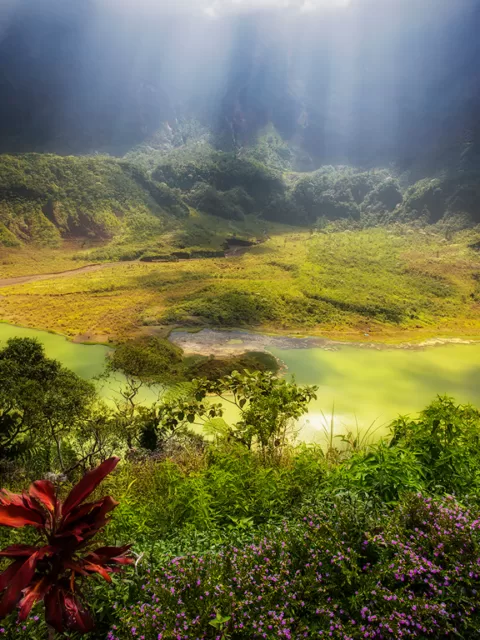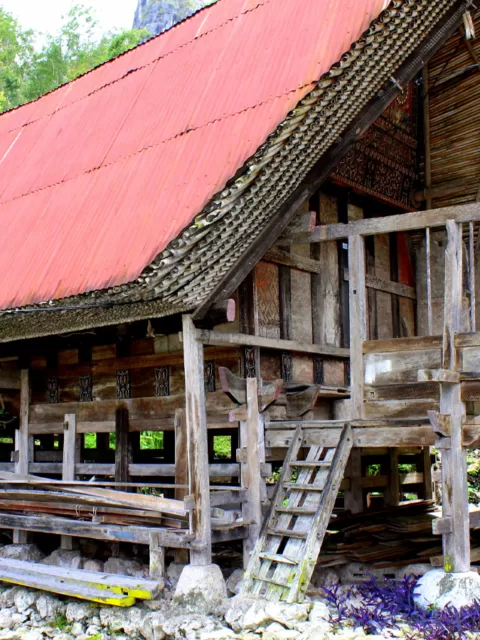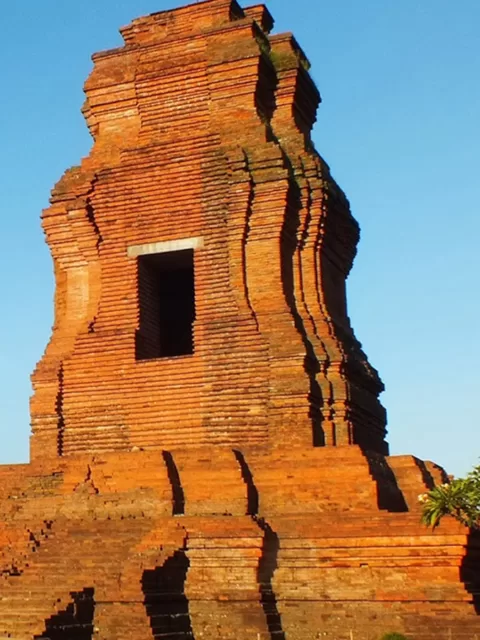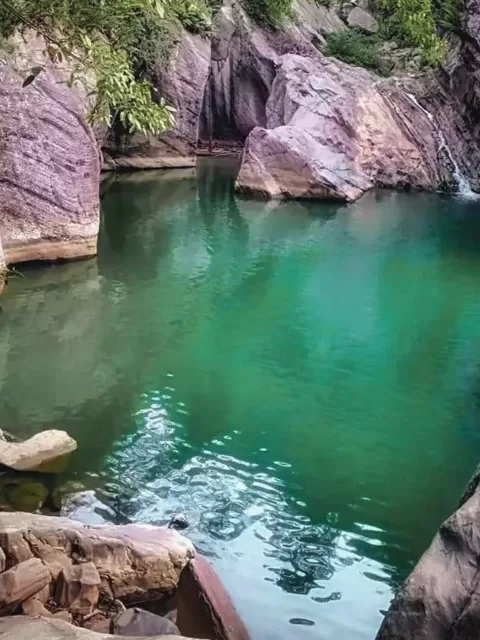Explore the Majestic Penataran Temple in East Java
A brief overview of Penataran Temple
Nestled in the verdant foothills of Mount Kelud in East Java, Indonesia, lies the majestic Penataran Temple. This sprawling Hindu temple complex is one of the largest and most important in the country, and its stunning architecture, rich history, and cultural significance make it a must-see destination for visitors to Indonesia.
Setting the stage
Penataran Temple is believed to have been constructed in the 12th century during the Majapahit Empire, one of the most powerful and influential empires in Southeast Asian history. The temple was dedicated to the Hindu trinity of Brahma, Vishnu, and Shiva, and it served as an important religious and cultural center for the Majapahit people.
Over the centuries, Penataran Temple has undergone several renovations and expansions. However, the temple’s core structure and many of its original features have remained intact. Today, Penataran Temple is a UNESCO World Heritage Site and one of the most popular tourist attractions in East Java.
Historical significance of Penataran Temple
Penataran Temple played a significant role in the history of East Java. The temple was a major pilgrimage site for Hindus throughout the Majapahit Empire, and it served as a venue for important religious ceremonies and festivals.

Penataran Temple was also a center of learning and culture. The temple grounds were home to schools and libraries, and scholars from all over the region came to Penataran to study and teach.
Comparisons with other temples in Indonesia
Penataran Temple is one of the largest and most impressive Hindu temples in Indonesia. The temple complex covers an area of over 10 hectares and features a variety of architectural styles, including Javanese, Hindu, and Buddhist elements.
Some of the most notable features of Penataran Temple include its towering gateways, intricate carvings, and well-preserved statues. The temple’s main shrine is dedicated to the Hindu god Vishnu, and it is home to a massive statue of the deity.
Other important temples in Indonesia include Borobudur, Prambanan, and Besakih. Borobudur is a massive Buddhist temple complex located in Central Java, and it is one of the largest Buddhist temples in the world. Prambanan is a Hindu temple complex located near Yogyakarta, and it is known for its towering spires and intricate carvings. Besakih is a Hindu temple complex located on the slopes of Mount Agung in Bali, and it is considered to be the most important temple in Bali.
Why Penataran Temple stands out
Penataran Temple stands out from other temples in Indonesia for several reasons. First, the temple complex is exceptionally large and well-preserved. Second, Penataran Temple features a unique blend of Javanese, Hindu, and Buddhist architectural styles. Third, the temple is home to a number of important religious artifacts, including a massive statue of the Hindu god Vishnu.
Finally, Penataran Temple is located in a beautiful setting at the foot of Mount Kelud. The temple’s grounds are surrounded by lush vegetation, and visitors can enjoy stunning views of the surrounding mountains.
Architecture and design
Penataran Temple is a masterpiece of Javanese architecture. The temple complex features a variety of architectural styles, including Javanese, Hindu, and Buddhist elements.
One of the most distinctive features of Penataran Temple is its towering gateways. The gateways are made of red brick and are decorated with intricate carvings. The main gateway to the temple complex is known as the Dwarapala Gate, and it is flanked by two statues of Dwarapalas, or guardian deities.

Once through the Dwarapala Gate, visitors enter the main courtyard of the temple complex. The courtyard is home to a number of important temples and shrines, including the main shrine dedicated to the Hindu god Vishnu.
The main shrine is a three-story structure with a tiered roof. The shrine is made of andesite and is decorated with intricate carvings. The interior of the shrine is home to a massive statue of the Hindu god Vishnu.
Other notable architectural features of Penataran Temple include the Pendopo, a pavilion that was used for religious ceremonies and festivals, and the Bale Kambang, a floating pavilion that was used for royal baths.
Artistic and cultural elements
Penataran Temple is a treasure trove of Javanese art and culture. The temple complex is home to a number of important religious artifacts, including statues, carvings, and reliefs.
The temple’s walls are decorated with intricate carvings depicting scenes from Hindu mythology. The temple grounds are also home to a number of statues of Hindu deities and religious figures.
Penataran Temple has played an important role in Javanese culture for centuries. The temple complex has been a venue for important religious ceremonies and festivals, and it has served as a center for learning and culture.
The temple is dedicated to the Hindu trinity of Brahma, Vishnu, and Shiva, and it is believed to have been constructed in the 12th century during the Majapahit Empire. The Majapahit Empire was one of the most powerful and influential empires in Southeast Asian history, and Penataran Temple was one of its most important religious and cultural centers.

Throughout the centuries, the temple has been a pilgrimage site for Hindus from all over Java. The temple has also been a venue for important religious ceremonies and festivals, such as Galungan, Kuningan, and Nyepi.
In addition to its religious significance, Penataran Temple has also played an important role in Javanese culture and society. The temple complex has been a center for learning and culture for centuries. The temple grounds were home to schools and libraries, and scholars from all over the region came to Penataran to study and teach.
Penataran has also been a center for the arts. The temple walls are decorated with intricate carvings depicting scenes from Hindu mythology, and the temple grounds are home to a number of statues of Hindu deities and religious figures.
Today, Penataran Temple is a UNESCO World Heritage Site and one of the most popular tourist attractions in East Java. The temple complex is a testament to the rich history and culture of Java, and it continues to be an important religious and cultural center for the Javanese people.
Here are some specific examples of the cultural and social roles that Penataran Temple has played in Javanese culture:
- The temple has been a venue for important religious ceremonies and festivals for centuries, such as Galungan, Kuningan, and Nyepi. These festivals are celebrated by Hindus all over Java, and Penataran Temple is one of the most popular pilgrimage sites for these festivals.
- The temple has also been a center for learning and culture. The temple grounds were home to schools and libraries, and scholars from all over the region came to Penataran to study and teach. The temple has played an important role in the development of Javanese culture and identity.
- The temple has also been a center for the arts. The temple walls are decorated with intricate carvings depicting scenes from Hindu mythology, and the temple grounds are home to a number of statues of Hindu deities and religious figures. The temple has played an important role in the development of Javanese art and culture.
- The temple has also been a place for people to come together and socialize. The temple grounds are a popular place for people to gather and celebrate special occasions, such as weddings and birthdays. The temple has played an important role in strengthening community ties and social cohesion in Java.
Overall, the temple has played a significant role in Javanese culture for centuries. The temple complex has been a venue for important religious ceremonies and festivals, a center for learning and culture, a center for the arts, and a place for people to come together and socialize. The temple has played an important role in shaping the Javanese identity and culture.
Cultural and religious importance
Penataran is a sacred site for Hindus in Indonesia. The temple complex is home to a number of important religious shrines and artifacts, and it is a popular pilgrimage destination for Hindus from all over the country.

Penataran Temple is also a significant cultural center for the Javanese people. The temple complex has been a venue for important religious ceremonies and festivals for centuries, and it has played an important role in the development of Javanese culture and identity.
Festivals and rituals associated with Penataran Temple
A number of important Hindu festivals and rituals are celebrated at Penataran throughout the year. Some of the most important festivals include:
- Galungan: This festival celebrates the victory of good over evil. It is one of the most important Hindu festivals in Indonesia, and it is celebrated at Penataran Temple with a series of elaborate ceremonies and rituals.
- Kuningan: This festival marks the end of the Galungan festival. It is a time for families to come together and remember their ancestors.
- Nyepi: This is the Hindu New Year. It is a day of silence and reflection, and all activities are suspended.
In addition to these major festivals, Penataran Temple is also a venue for a number of smaller religious ceremonies and rituals throughout the year.
Spiritual significance for visitors and locals
Penataran Temple is a sacred site for both visitors and locals. The temple complex is a place of peace and tranquility, and it is a popular destination for people who are seeking spiritual enlightenment.
Many visitors to Penataran Temple are drawn to the temple’s powerful energy. The temple complex is said to be a place where people can connect with their inner selves and with the divine.
Local people also hold the temple in high regard. The temple complex is a place where people can come to pray, to make offerings, and to seek blessings.
The grandeur of Penataran Temple
Penataran Temple is one of the largest and most impressive Hindu temples in Indonesia. The temple complex covers an area of over 10 hectares and features a variety of architectural styles, including Javanese, Hindu, and Buddhist elements.
Size and scale compared to other temples in East Java
Penataran Temple is the largest Hindu temple complex in East Java. The temple complex is over twice the size of the second largest Hindu temple complex in East Java, the Panataran Temple.
Impressions and awe-inspiring moments for visitors
Visitors to Penataran Temple are often awestruck by the temple complex’s size, grandeur, and beauty. The temple’s towering gateways, intricate carvings, and well-preserved statues are all impressive sights to behold.
Many visitors also find the temple’s peaceful atmosphere and spiritual energy to be awe-inspiring.
Preservation efforts and conservation
The Indonesian government has made a significant effort to preserve and conserve Penataran Temple. The temple complex is a UNESCO World Heritage Site, and it is protected by Indonesian law.
The government has also funded a number of restoration projects at Penataran Temple. These projects have helped to preserve the temple’s original features and to make the temple complex safe for visitors.

Exploring the Temple
Penataran Temple is a popular tourist destination, and there are a number of ways for visitors to explore the temple complex.
Practical information for visitors
Penataran Temple is open to visitors daily from 8:00 AM to 5:00 PM. There is an admission fee for visitors, and visitors are required to dress respectfully when visiting the temple complex.
Guided tours and local insights
Visitors can book guided tours of Penataran Temple from local tour operators. Guided tours are a great way to learn about the temple’s history, architecture, and cultural significance.
Visitors can also learn about the temple from locals. Many local people are knowledgeable about the temple’s history and traditions, and they are happy to share their knowledge with visitors.
Tips for a fulfilling visit
Here are some tips for a fulfilling visit to Penataran Temple:
- Arrive early in the morning to avoid the crowds.
- Wear comfortable shoes, as you will be doing a lot of walking.
- Bring a camera to capture the temple’s beauty.
- Be respectful of the temple’s sacred nature.
Recap of the Temple’s unique aspects
Penataran Temple is a majestic and awe-inspiring Hindu temple complex in East Java, Indonesia. The temple complex is steeped in history and culture, and it is a popular destination for visitors from all over the world.
The temple is unique in a number of ways. First, the temple complex is huge and well-preserved. Second, the temple features a unique blend of Javanese, Hindu, and Buddhist architectural styles. Third, the temple is home to a number of important religious artifacts, including a massive statue of the Hindu god Vishnu.
Finally, Penataran Temple is located in a beautiful setting at the foot of Mount Kelud. The temple’s grounds are surrounded by lush vegetation, and visitors can enjoy stunning views of the surrounding mountains.
Encouragement to visit and experience its majesty
I highly encourage everyone to visit Penataran Temple and experience its majesty for themselves. The temple complex is a truly awe-inspiring sight, and it is a place where people can connect with their inner selves and with the divine.
If you are planning a trip to East Java, be sure to add Penataran Temple to your itinerary. You won’t be disappointed.
Additional information
Here is some additional information that you may find helpful when planning your visit to Penataran Temple:
- How to get there: Penataran Temple is located in the village of Penataran, approximately 12 kilometers from the city of Blitar. The temple complex is accessible by car, motorcycle, or public transportation.
- Where to stay: There are a number of hotels and guesthouses located in the village of Penataran and in the surrounding area.
- What to wear: When visiting Penataran Temple, it is important to dress respectfully. Visitors should avoid wearing shorts, skirts, or revealing clothing.
- What to bring: Visitors should bring a camera to capture the temple’s beauty. They should also bring sunscreen, a hat, and water, especially if visiting during the hot season.





